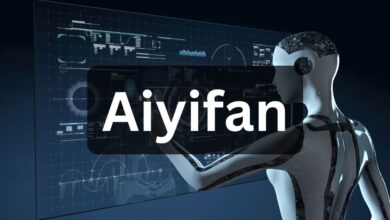TheJavaSea.me Leaks AIO-TLP: Understanding the Impact and Implications

TheJavaSea.me leaks AIO-TLP is a topic that has garnered significant attention in recent times, especially in the tech community. The leaks, which involve sensitive data and information, have raised concerns about privacy, security, and the ethical responsibilities of those who handle such data. In this article, we will explore what theJavaSea.me leaks AIO-TLP are, the potential impact of these leaks, and what measures can be taken to prevent similar incidents in the future.
What Are TheJavaSea.me Leaks AIO-TLP?
TheJavaSea.me leaks AIO-TLP refer to the unauthorized disclosure of information from the website TheJavaSea.me. AIO-TLP, which stands for All-In-One Threat Level Protocol, is a term used to categorize the severity and nature of the leaks. The information leaked could range from personal data, such as usernames and passwords, to more sensitive information like financial records or proprietary business data.
These leaks can have wide-reaching implications, especially for individuals and organizations that rely on the confidentiality of their data. The leaks may have occurred due to various reasons, including hacking, insider threats, or vulnerabilities in the website’s security systems.
The Impact of TheJavaSea.me Leaks AIO-TLP
The impact of theJavaSea.me leaks AIO-TLP can be profound, affecting both individuals and businesses. Here are some of the potential consequences:
1. Privacy Breaches: One of the most immediate concerns with any data leak is the breach of privacy. Individuals whose personal information has been exposed may find themselves vulnerable to identity theft, fraud, or other malicious activities. The leaks can also expose sensitive communication or personal details, leading to further privacy violations.
2. Financial Losses: For businesses, the financial implications of a data leak can be severe. Leaked financial records or proprietary business information can lead to loss of revenue, damaged reputation, and even legal action. Customers may lose trust in the company, leading to a decline in business and potential lawsuits.
3. Reputational Damage: Reputation is everything in today’s digital age. A data leak can severely damage the reputation of a company, especially if the leak is handled poorly. Customers and clients may lose confidence in the business’s ability to protect their information, leading to a decline in trust and loyalty.
4. Legal Consequences: Data leaks can also result in legal ramifications. Depending on the nature of the information leaked and the jurisdiction in which the leak occurred, companies may face fines, penalties, or lawsuits. Regulatory bodies may also step in to enforce stricter data protection measures, adding to the financial burden of the leak.
5. Operational Disruption: In some cases, theJavaSea.me leaks AIO-TLP may disrupt the normal operations of a business. For example, if critical systems or information are compromised, the company may need to shut down temporarily to address the issue. This disruption can lead to lost productivity and revenue.
Causes of TheJavaSea.me Leaks AIO-TLP
Understanding the causes of theJavaSea.me leaks AIO-TLP is crucial for preventing future incidents. While the exact cause of the leaks may vary, some common factors include:
1. Hacking and Cyberattacks: Hackers are constantly looking for vulnerabilities in websites and systems to exploit. If theJavaSea.me’s security measures were not robust enough, hackers could have gained unauthorized access to the site’s data. Cyberattacks such as phishing, ransomware, or brute force attacks may have been used to breach the site.
2. Insider Threats: Not all data leaks come from external sources. In some cases, insiders within an organization may be responsible for leaking information. This could be due to malicious intent, negligence, or a lack of awareness about the importance of data security.
3. Software Vulnerabilities: Websites and systems often rely on software that may have vulnerabilities. If theJavaSea.me was using outdated or unpatched software, it could have been exploited by attackers to gain access to sensitive data. Regular updates and patches are essential to close these security gaps.
4. Human Error: Human error is another common cause of data leaks. Employees may accidentally disclose information, fall victim to phishing attacks, or fail to follow proper security protocols. Training and awareness programs can help mitigate this risk.
5. Lack of Encryption: Encryption is a critical security measure that protects data from unauthorized access. If the information on theJavaSea.me was not properly encrypted, it could have been easily accessed by attackers. Ensuring that sensitive data is encrypted both in transit and at rest is essential for protecting it from leaks.
Preventing Future Leaks: Best Practices
To prevent future incidents like theJavaSea.me leaks AIO-TLP, it is important to implement strong security measures and best practices. Here are some steps that can be taken:
1. Strengthen Security Measures: Investing in robust security measures is the first step in preventing data leaks. This includes using firewalls, intrusion detection systems, and encryption to protect sensitive information. Regular security audits and assessments can help identify and address vulnerabilities.
2. Implement Access Controls: Limiting access to sensitive information is another key measure. Only authorized personnel should have access to critical data, and access should be granted based on the principle of least privilege. Implementing multi-factor authentication (MFA) can add an extra layer of security.
3. Educate Employees: Employees should be trained on the importance of data security and how to recognize potential threats. Regular training sessions can help raise awareness about phishing attacks, social engineering, and other common tactics used by attackers.
4. Regularly Update Software: Keeping software up to date is essential for closing security vulnerabilities. Ensure that all systems, applications, and plugins are regularly updated with the latest patches and security fixes.
5. Monitor for Suspicious Activity: Monitoring systems for suspicious activity can help detect potential breaches early on. Implementing logging and monitoring tools can provide real-time insights into any unusual behavior, allowing for a swift response to potential threats.
6. Develop a Response Plan: Having a response plan in place is crucial for minimizing the impact of a data leak. This plan should include steps for containing the leak, notifying affected parties, and mitigating any damage. Regularly testing the plan through simulations can help ensure that everyone knows what to do in the event of a leak.
7. Encrypt Sensitive Data: Encryption is one of the most effective ways to protect sensitive data from leaks. Ensure that all sensitive information is encrypted both in transit and at rest. This makes it much more difficult for attackers to access the data, even if they manage to breach the system.
8. Use Strong Passwords: Weak passwords are a common entry point for attackers. Ensure that all passwords used on theJavaSea.me and related systems are strong and unique. Implementing a password policy that requires complex passwords and regular updates can help reduce the risk of unauthorized access.
9. Collaborate with Security Experts: If you’re unsure about the best security measures to implement, consider collaborating with security experts. They can provide valuable insights and help design a security strategy that is tailored to your specific needs.
The Ethical Considerations of Data Leaks
Data leaks like theJavaSea.me leaks AIO-TLP also raise important ethical considerations. While the focus is often on the technical aspects of preventing leaks, it is equally important to consider the ethical responsibilities of those handling sensitive data.
1. Protecting Privacy: One of the primary ethical concerns is the protection of privacy. Individuals trust organizations with their personal information, and it is the organization’s responsibility to safeguard that information. Failing to do so can result in significant harm to individuals, including identity theft and financial loss.
2. Transparency: Transparency is another key ethical consideration. If a data leak occurs, it is important for the organization to be transparent about what happened, what data was affected, and what steps are being taken to address the issue. Hiding or downplaying the leak can erode trust and lead to further reputational damage.
3. Accountability: Organizations must also be accountable for their actions. If a data leak occurs due to negligence or poor security practices, the organization must take responsibility and work to rectify the situation. This includes compensating affected parties and implementing measures to prevent future leaks.
4. Ethical Hacking: In some cases, data leaks may be the result of ethical hacking, where hackers expose vulnerabilities to help organizations improve their security. While ethical hacking can be valuable, it is important for organizations to work with ethical hackers in a way that respects privacy and confidentiality.
Conclusion: The Importance of Vigilance
TheJavaSea.me leaks AIO-TLP serve as a reminder of the importance of vigilance when it comes to data security. As cyber threats continue to evolve, organizations must stay ahead of the curve by implementing strong security measures, educating employees, and being prepared to respond to potential leaks.
By taking a proactive approach to data security, organizations can protect themselves, their customers, and their reputations from the devastating impact of data leaks.
you may also read fastblogstime.




